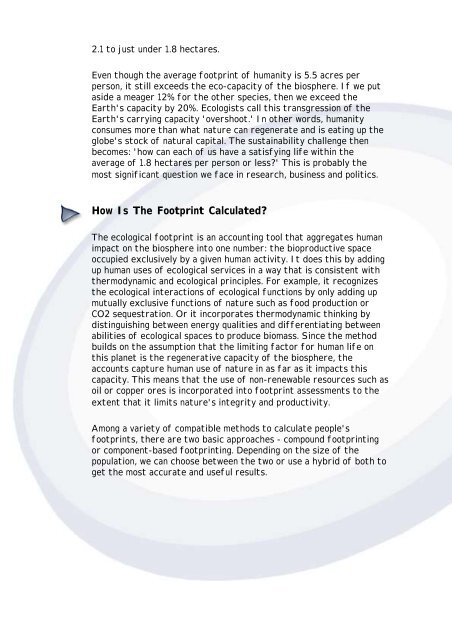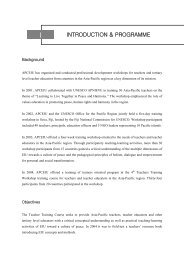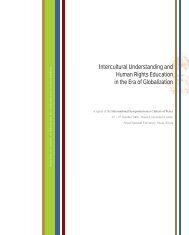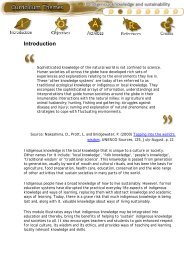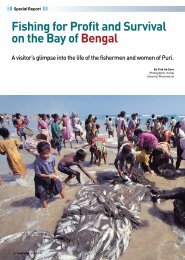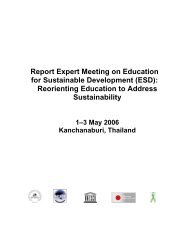Module 9 Consumer education - APCEIU
Module 9 Consumer education - APCEIU
Module 9 Consumer education - APCEIU
You also want an ePaper? Increase the reach of your titles
YUMPU automatically turns print PDFs into web optimized ePapers that Google loves.
2.1 to just under 1.8 hectares.<br />
Even though the average footprint of humanity is 5.5 acres per<br />
person, it still exceeds the eco-capacity of the biosphere. If we put<br />
aside a meager 12% for the other species, then we exceed the<br />
Earth's capacity by 20%. Ecologists call this transgression of the<br />
Earth's carrying capacity 'overshoot.' In other words, humanity<br />
consumes more than what nature can regenerate and is eating up the<br />
globe's stock of natural capital. The sustainability challenge then<br />
becomes: 'how can each of us have a satisfying life within the<br />
average of 1.8 hectares per person or less' This is probably the<br />
most significant question we face in research, business and politics.<br />
How Is The Footprint Calculated<br />
The ecological footprint is an accounting tool that aggregates human<br />
impact on the biosphere into one number: the bioproductive space<br />
occupied exclusively by a given human activity. It does this by adding<br />
up human uses of ecological services in a way that is consistent with<br />
thermodynamic and ecological principles. For example, it recognizes<br />
the ecological interactions of ecological functions by only adding up<br />
mutually exclusive functions of nature such as food production or<br />
CO2 sequestration. Or it incorporates thermodynamic thinking by<br />
distinguishing between energy qualities and differentiating between<br />
abilities of ecological spaces to produce biomass. Since the method<br />
builds on the assumption that the limiting factor for human life on<br />
this planet is the regenerative capacity of the biosphere, the<br />
accounts capture human use of nature in as far as it impacts this<br />
capacity. This means that the use of non-renewable resources such as<br />
oil or copper ores is incorporated into footprint assessments to the<br />
extent that it limits nature's integrity and productivity.<br />
Among a variety of compatible methods to calculate people's<br />
footprints, there are two basic approaches - compound footprinting<br />
or component-based footprinting. Depending on the size of the<br />
population, we can choose between the two or use a hybrid of both to<br />
get the most accurate and useful results.


